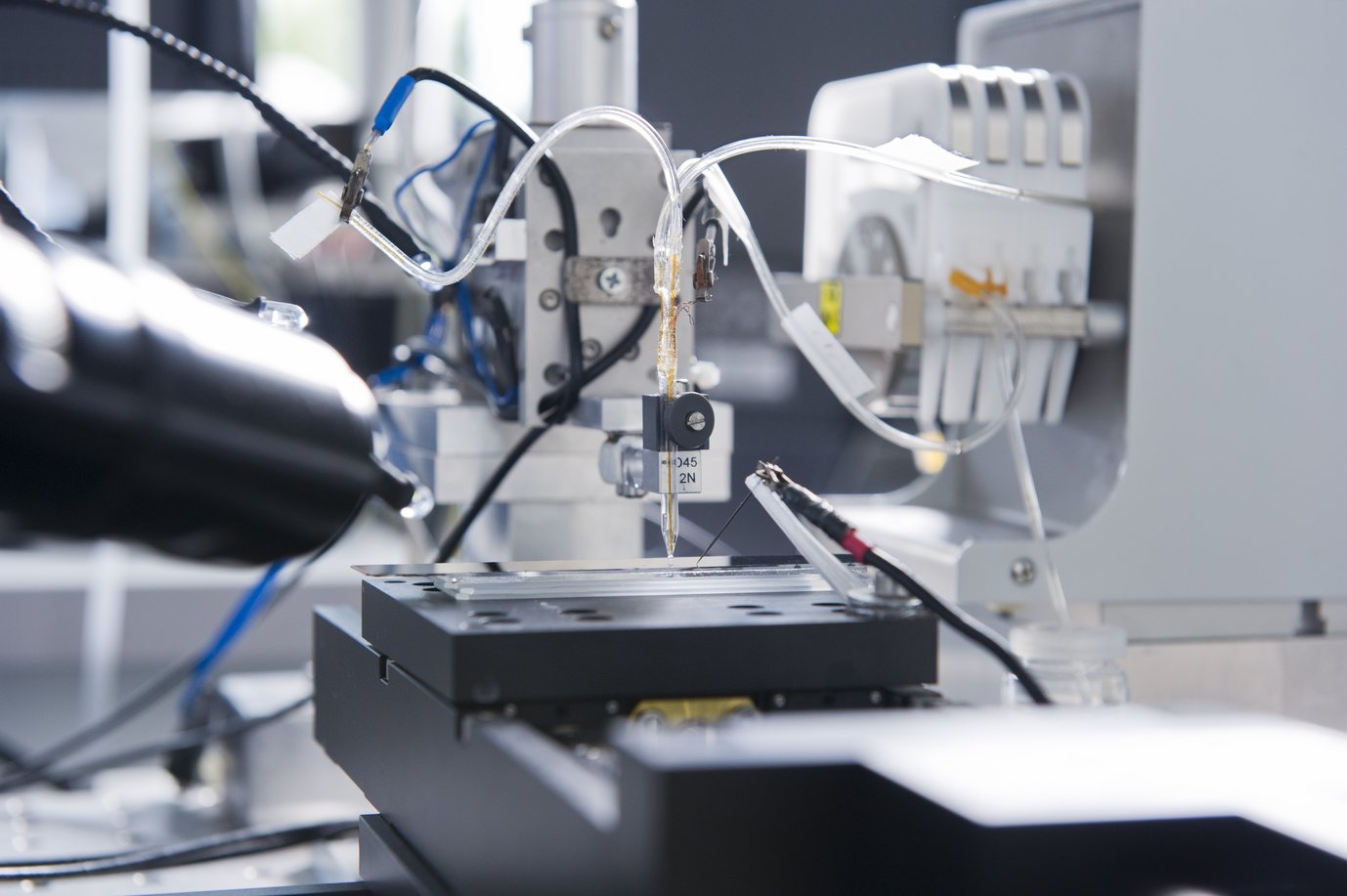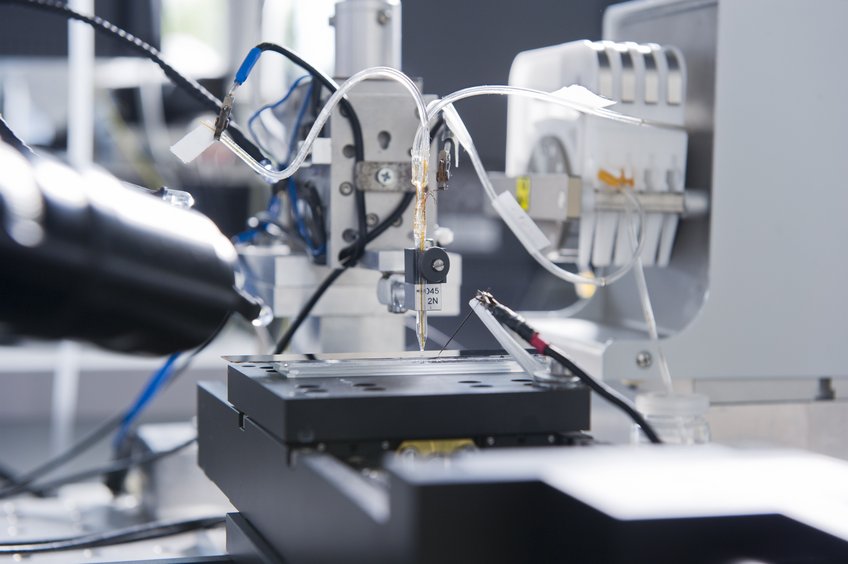CO2 can do Investigating catalysts for the electrochemical conversion of carbon dioxide
Converting CO2 into methanol and other valuable chemicals (Cn products) is still a major challenge. The electrochemical reduction of CO2 to useful fuel or chemical feedstock molecules is associated with severe problems such as low activity, deterioration of the catalyst over time and lack of product selectivity. Finding potential electrocatalytic materials to improve the reaction is considered as the most crucial point, but simple trial and error approaches with conservative and separated investigations have not been successful so far. Dr. Karl Mayrhofer and his “Electrocatalysis“ group at the MPIE make an innovative, combinatorial approach: by combining several in situ investigation techniques they are searching for new catalyst materials with good activity, selectivity and stability.
The scanning flow cell
“The heart of the set-up is the scanning flow cell“, states Mayrhofer, who was just recently awarded a grant of more than 1 Mio € by the Federal Ministry of Education and Research (BmBF). The scanning flow cell (SFC) allows for a high-throughput electrochemical surface analysis down to the micro-meter range. The SFC is made up of a microfluidic system with tiny channels in which the counter and the reference electrode are placed. The capillary is positioned onto the sample, which is at the same time the working electrode, thus forming a micrometer size electrochemical cell. Automatically the capillary moves to the next position where the next measurement is taken under the exact same conditions. “With the SFC we cannot only determine optimal reactor operation conditions in a fast way, or quickly screen for active material compositions - we can even analyse the re-action products online to predict sta-bility and selectivity in parallel “, says Mayrhofer.

The SFC allows a high-throughput electrochemical surface analysis.
Online investigation of reaction products
The electrolyte flowing through the capillary contains the mixture of pro-ducts, side products and components from catalyst deterioration. They are investigated by coupling the SFC with a Differential Electrochemical Mass Spectrometer (DEMS) and an Inductively Coupled Plasma Mass Spectrometer (ICP-MS), both highly sensitive techniques. With the DEMS it is possible to obtain data on the sensitivity of the reduction of CO2 and the dependence of the efficiency of the process vs. time. Coupling SFC-ICP/MS enables the online investigation of the potential-dependent stability of the electrodes, the most crucial part for electrocatalyst development. The combinatorial screening will allow a flexible approach with respect to the anticipated materials, which includes several material libraries of binary and ternary material combinations. Screening 20 full libraries per month - this is the ambitious goal. In the end the best performing materials will be used for further investigations and up-scaling processes within industrial cooperations, which will ide-ally bring utilisation of CO2 one step closer to implementation.
Author: Karl Mayrhofer
